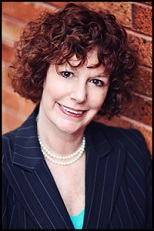 Special to the Philanthropy Journal
Special to the Philanthropy Journal
By Patti Gillenwater
Much is being written about founders and long-term executive directors. Terms such as “founder’s syndrome” are frequently referenced as the nonprofit sector is responding to the wave of retirements that has begun in recent years. This has become a popular term for the difficulty faced by organizations where one or more founders maintain disproportionate power and influence following the effective initial establishment of the nonprofit, leading to a wide range of problems for both the organization and those involved in it.
We believe that it is time to add to the conversation by highlighting the accomplishments, passion, and incredible hard work and dedication these leaders have invested in improving the lives of those they serve.
This month’s leadership column is about founders who became executive directors of their nonprofits, what they created, and the impact they have made. In future columns, we will go back to these leaders to explore lessons they can share about building their organizations and transitioning from founder/leader to retiree. 
Twenty years before “Collective Impact” was becoming a common concept in the nonprofit sector, Jane Kendall, recently retired founder of the N.C. Center for Nonprofits, used this approach to building the nonprofit she founded. Jane Kendall was leading a nonprofit in Washington, D.C. when she found that, like many executive directors, she had deep knowledge in her field but lacked experience in running a nonprofit organization. She quickly discovered that it was not an easy task to find answers to her management, governance, and legal questions. Curious for solutions, she applied for and received a Kellogg Foundation Leadership Fellowship that funded her learning project on the challenges that other nonprofit leaders faced. After three years of interviewing leaders across the country and internationally, she saw a compelling picture of the service gaps facing the sector. In 1990 she decided to start a statewide support organization for NC nonprofits.
Jane was determined to get genuine grassroots input from a full spectrum of North Carolina’s nonprofits about whether they wanted such a statewide entity and, if so, what it should do. She met nonprofit leaders in their own communities, always invited by a respected local leader. With grant support, she ultimately engaged 2,153 board and staff members from nonprofits of all sizes in every field and in all 100 NC counties. From this input, Jane asked the founding board and a large, statewide “concept group” to develop the Center’s mission and priorities.
Linda Harrill was hired to start Communities in Schools of North Carolina, one of the first four statewide organizations launched by CIS National, in 1989, and retired after 25 years of leading the start-up and growth of this $4 million nonprofit. Linda Harrill was recruited to help replicate the success Charlotte had achieved with Communities in Schools to benefit the rest of the students in North Carolina. Her earlier career in special education had left Linda with a strong desire to help the students who were excluded from the support offered through special education resources in the 1970’s and 1980’s. The CIS model was an answer to that unmet need so she accepted the challenge.
The challenge was also attractive to her because she had a national model and it was up to her to create the pathway to achieve the goal and implement the model. CIS National was also starting statewide organizations in Georgia, South Carolina and Florida, and Linda used this community of three other start-up EDs as support along the way.
Brian Collier, Executive Vice President, Foundation for the Carolinas, was the initial Executive Director for Victory Junction Gang Camp in Randleman, NC and shares his experiences as a founding Executive Director.
Brian Collier was recruited by the Petty family who founded the NC camp – Victory Junction Gang Camp, a member of Paul Newman’s SeriousFun Children’s Network, providing camp experiences for children with serious illnesses. As their initial Executive Director, Brian was responsible for oversight of building the $35 million facility, fundraising, establishing the values and positioning for this new nonprofit and working with the board. He successfully built and launched the camp and led them through the first year of operations.
Like Linda, he had a model to guide him. In addition, the success he achieved for the start-up of this nonprofit required entrepreneurial leadership skills and the ability to work with a family that was carrying out the dream of their son who had tragically died at the age of 19.
To say that the impact of these three nonprofits is impressive is an understatement. Some highlights of what these leaders have created include:
N.C. Center for Nonprofits
- 1,550 member nonprofits in all 100 counties of NC
- A united voice created for all nonprofits, with more than 75 hard-fought legislative victories
- 83,074 board and staff leaders trained
- 130,056 confidential consultations provided 6 pro bono programs for help from attorneys, CPAs, personal coaches, and experts in HR, marketing, and executive succession
- 164 tools on effective practices downloaded per day
- 30 discounts to stretch nonprofits’ funds further
Communities in Schools of North Carolina
- Serving 32 Communities
- 130,000 students per year
- 50 counties across NC
In addition, CISNC contributed to the increase in the graduation rate in NC which moved from 60% to 82% during the years Linda led CISNC. Victory Junction Gang Camp
- 21,000 children and family members served in first 10 years
- 42,742 average hours of service to campers per year
None of the metrics highlighted capture the impact of the hundreds of thousands of lives that have been impacted by the work of these organizations – both directly and indirectly – serving those in need and bringing hope to those who love them. To founders everywhere – we say Thank you!
Patti Gillenwater is CEO of Elinvar. Elinvar is a retained search and leadership development firm that specializes in serving mission driven organizations.





